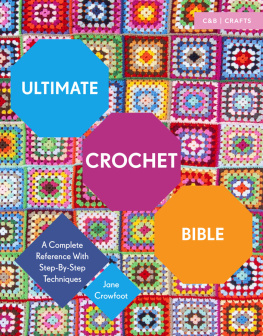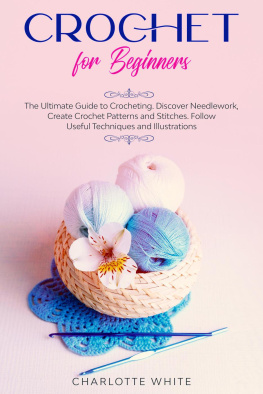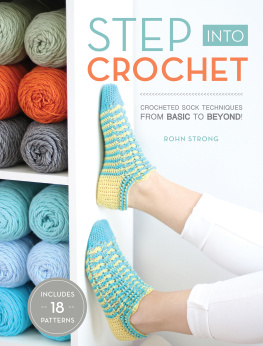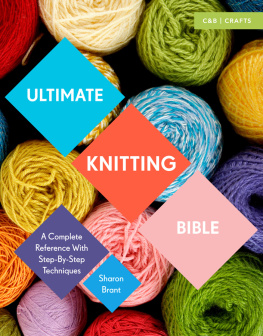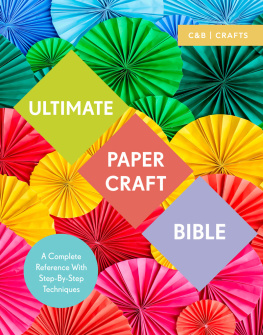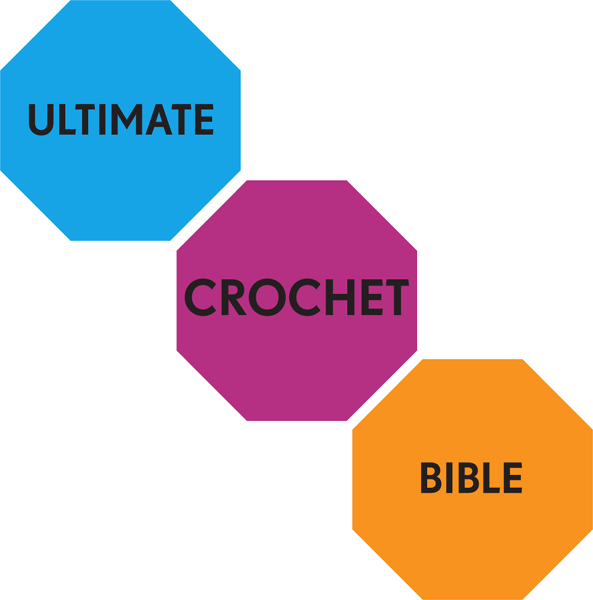



This book is dedicated to the memory of my Great-Grandmother Alice Martin who gave me the crochet gene.
contents


introduction
My great grandmother was a demon with a crochet hook and continued to produce granny square blankets right into her 90s. She would buy old jumpers from thrift stores, charity shops or yard sales and produce the most fantastic blankets from the unraveled yarn. I remember being enthralled by the speed of her hands and amazed by her artistic productivity. Over the years she must have produced literally hundreds of blankets of various sizes. All new babies received a cot cover; every bed had a blanket. Nanas creations were not only given to every family member, but were also donated to charities as raffle prizes or to keep people in need warm through the winter. Family members now live all over the world and I would love to know what Nana would make of her blankets adorning beds in countries that she never got to visit.
Even though I spent my childhood years surrounded by Nanas crochet blankets it was only relatively recently that I got to grips with the craft myself. Crochet is currently enjoying a huge revival with many people now wanting to pick up a hook in order to create lovely garments and projects for the home. Once mastered, crochet is incredibly speedy and portable. Equipment is minimal and inexpensive. It is easily stowed away in a small bag and can be carried with you on your travels. I am a complete crochet addict and hope that with the help of this book you will perhaps become one too!
If you are a complete novice I suggest you read the book from the very beginning, and then, once you have practiced a little and perfected your basic stitches, progress through the chapters. I have included many clear step-by-step illustrations to help you achieve accurate stitches. You will find that in the first few chapters these pictorial references are abundant, with each tiny step of the stitch process having its own illustration. As you progress through the book the techniques become more complex and thus the illustrations are more intricate. It is assumed that you have a good knowledge of the basic stitches by this point. For each technique you will also find a partnering image. There are over 200 images for you to refer to, each one designed to clearly show you how completed stitches should appear.
The Ultimate Crochet Bible follows a logical path, techniques become more complex from mid way and towards the end I have included a large professional finishing chapter designed to help you achieve the best results when putting together your project. So whether you want to learn how to add texture to your work, make crochet lace, add beads and color, or if you want to learn a specific style of crochet such as Tunisian, Irish, Freeform or Amigurumi then look no further than this book. Adopt the crochet religion, say your prayers, make this your bible and become a yarn disciple like me!
Good luck!

Jane Crowfoot

getting started
One of the advantages of the craft of crochet over many other crafts, is the relatively small amount of equipment you need in order to get going. Crochet is very portable because, a lot of the time, you are reliant on just a hook and a ball of yarn. However, it is worth spending time choosing the correct equipment and making sure that you have all the pieces you are likely to need.
choosing a hook
Crochet hooks come in many shapes and sizes; some have thick handles, and others are very fine. Some are made from metal, others from plastic or bamboo. The hook should be comfortable to hold and should not slip in your hand whilst you are working your stitches.
Hooks come in specific diameters, so that the crochet stitch can be made to the correct gauge (tension) for the article being made, and should be marked with the size. This relates to the size of the hook end and the shank diameter just below the hook. There are three main categories; US, imperial and metric. The US size will be given as an alphabetical and number reference (such as C for example), the size in imperial (UK) may be given as a numerical reference (such as 11 for example), while the size in metric will be given in millimeters (3.00mm). It is important that your chosen hook is compatible to the weight of your chosen yarn.
Unfortunately a universal comparison guide for crochet hook sizes does not exist. Hooks made by different manufacturers or produced in different continents or at different periods of time use different methods for sizing! The chart below can be used as a guide, but some hook sizes have no metric equivalent so be warned that comparisons in the chart are approximate and should be used for guidance only. If in doubt as to what size hook you have, try to match it to a standard millimeter size by using a reliable knitting needle and hook gauge. You may have to try a few different gauges until you find one that works for you.

Anatomy of a hook

Plastic and aluminum hooks
Aluminum and plastic crochet hooks are perhaps most common. Both types allow the yarn to slip well through stitches, but can be a little uncomfortable when working on large or heavy projects, or when used for long periods. Try wrapping a piece of sponge or soft fabric around the handle to make it more comfortable.

Steel hooks
Tiny hooks, which are used to make very fine lace weight fabrics, these are often made from steel because it is a harder metal than aluminum and thus is less liable to break at the hook end. Many of the really small steel hooks have a plastic handle to make the grip more comfortable.


